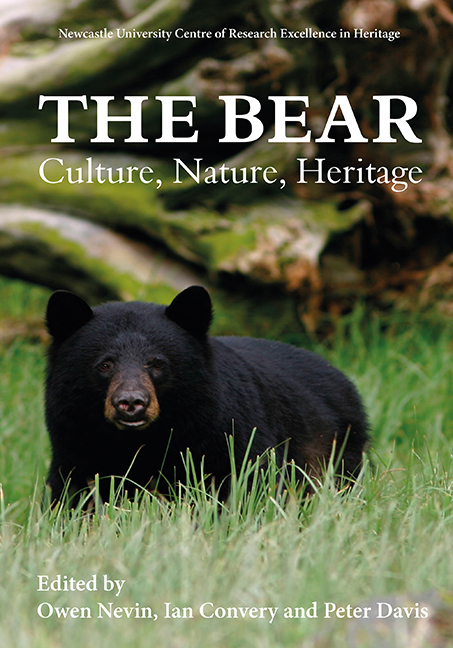Book contents
- Frontmatter
- Contents
- List of Illustrations
- Acknowledgments
- List of Abbreviations
- Foreword: The Bear: A Cultural and Natural Heritage
- Introduction: What is a Bear?
- Bear-People Interactions
- Bears in the Public Gaze
- Bear Biology, Management and Conservation
- Afterword: “It's Me Bear”: Reflections on a Unique Career Working with Bears
- List of Contributors
- Index
- Previous titles
10 - Museum Polar Bears and Climate Change
Published online by Cambridge University Press: 21 March 2020
- Frontmatter
- Contents
- List of Illustrations
- Acknowledgments
- List of Abbreviations
- Foreword: The Bear: A Cultural and Natural Heritage
- Introduction: What is a Bear?
- Bear-People Interactions
- Bears in the Public Gaze
- Bear Biology, Management and Conservation
- Afterword: “It's Me Bear”: Reflections on a Unique Career Working with Bears
- List of Contributors
- Index
- Previous titles
Summary
Polar bears have been around for a long time although, as species go, not too long. A fossil jawbone from Svalbard, with DNA well-preserved in the frigid climate, was used to show that the species diverged from the brown bear just 150,000 years ago. Chemical analysis of the fossil, which was 110–130,000 years old, showed that the bear had a marine, carnivorous diet, as in today's polar bears (Lindqvist 2010). During the great ice ages polar bears occurred far to the south of their present range: there is a magnificent mounted skeleton of a polar bear in Stavanger Museum of Archaeology, discovered beneath the floor of a house in southwest Norway in 1976 (Blystad et al 1983). The skeleton dates from the late Pleistocene, 12,400 years ago, when polar bears were not quite so polar as they are now (north polar, arctic or ice bear may be more appropriate names anyway); it was found in a well-preserved state, with seal bones in its stomach. Today, polar bears live around much of the Arctic, in 19 subpopulations (although there is apparently a lot of exchange of animals between areas) (eg Obbard et al 2010).
DEVELOPMENT OF AN ICON
Polar bears have been closely associated with the Arctic throughout modern history and make a number of appearances in Western art (see Donald 2010). They feature in many images relating to Britain's conquest of the Arctic and in search of the Northwest Passage. Notable among these is Richard Westall's (c. 1806) rather ludicrous image of a young Horatio Nelson beating off a polar bear with the butt end of his musket, recalling an incident in Svalbard: the bear looks more terrified than terrifying. Edwin Landseer's Man Proposes, God Disposes (exhibited in 1864) shows two furtive polar bears – one reviewer at the time likened them to ‘monster ferrets’ – atop the remains of a wrecked ship, or possibly some kind of shelter or grave. One gnaws on a human rib while the other tears at a piece of red cloth atop a cairn. Landseer uses the polar bear within his Arctic sublime, a nature red in tooth and claw that challenged British imperialist confidence, and drew on his rather bleak take on a Darwinian struggle for existence (Donald 2007, 94–100).
- Type
- Chapter
- Information
- The Bear: Culture, Nature, Heritage , pp. 119 - 130Publisher: Boydell & BrewerPrint publication year: 2019

